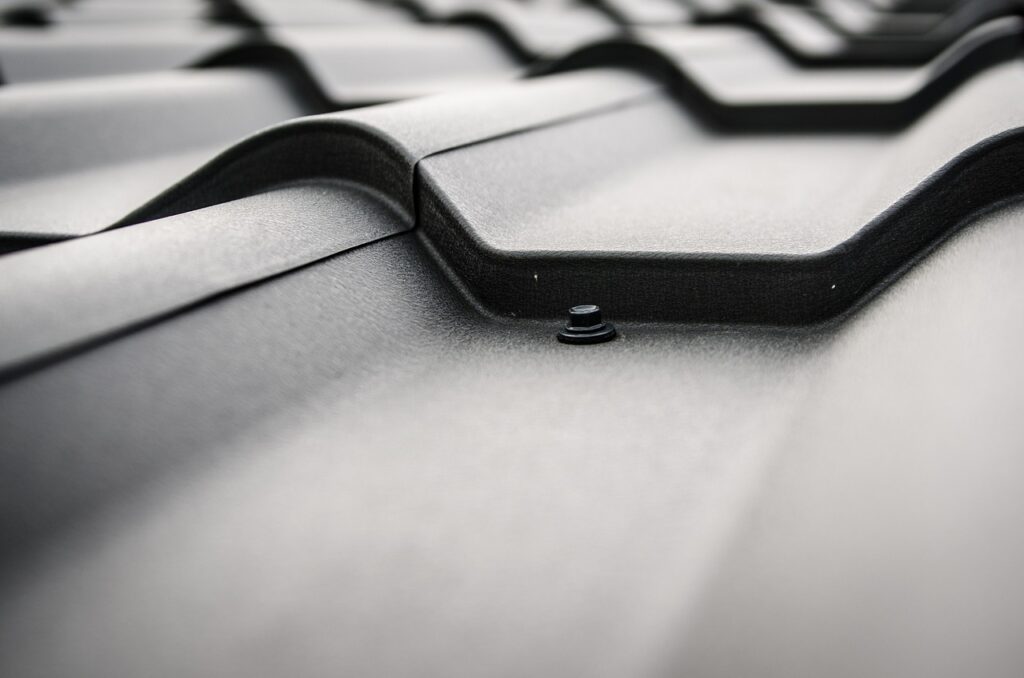A roof over your head is one of the most basic needs of all humans.
That is why selecting the right roofing material is one of the most critical decisions during construction or renovation of a metal building . The roof must protect the structure from environmental stressors while also offering long-term value.
Understanding how different roofing materials compare in terms of durability and cost can help building owners make informed decisions.
The Importance of Choosing the Right Roof
The roof of a metal building acts as the primary defense against the elements. It protects the interior from rain, snow, sun, and wind. It also contributes significantly to insulation and energy efficiency. An inadequate roofing material can lead to premature wear, increased maintenance costs, and even structural damage. Therefore, selecting a roof that is durable, weather resistant, and cost effective is essential for maximizing the building’s value and function.
Standing Seam Metal Roofs
Standing seam roofs are a popular choice for metal buildings due to their sleek appearance and exceptional performance. These roofs feature vertical panels with interlocking seams raised above the panel level. The design minimizes the risk of leaks since the fasteners are concealed. The panels can expand and contract with temperature changes without causing damage.
In terms of durability, standing seam metal roofs can last between forty to seventy years. They are often made from galvanized steel or aluminum, which resist rust and corrosion. Their tight seams make them highly effective in areas with high rainfall or snowfall.
While standing seam roofs come with a higher upfront cost, their long life and low maintenance requirements often justify the investment. Installation usually requires professional expertise, which can add to the cost. However, the long-term savings on repairs and energy bills can outweigh these initial expenses.
Corrugated Metal Roofing
Corrugated metal panels are another widely used roofing option for metal buildings. These panels have a distinctive wavy pattern that adds strength and rigidity. Corrugated roofing is commonly made from galvanized steel and often coated for additional weather resistance.
One of the main advantages of corrugated metal roofing is affordability. It is usually less expensive than standing seam systems, making it an attractive option for budget-conscious projects. Despite its lower cost, corrugated roofing still provides reliable protection for many years, often lasting thirty to fifty years when properly maintained.
Corrugated panels are easier to install and can be handled by DIYers in some cases. However, the exposed fasteners may become points of vulnerability over time. Regular inspections and maintenance can help address this issue and extend the roof’s lifespan.
Metal Shingles
Metal shingles combine the classic look of traditional roofing materials with the resilience of metal. These shingles can mimic the appearance of wood, slate, or asphalt, giving building owners aesthetic flexibility without compromising durability.
Made from aluminum, steel, or copper, metal shingles are designed to interlock tightly, preventing moisture from penetrating the roof. Their life expectancy ranges from forty to sixty years. Their lightweight nature places minimal stress on the structure, and their resistance to fire, wind, and impact makes them suitable for a range of environments.
The cost of metal shingles is typically higher than corrugated roofing but comparable to or slightly lower than standing seam panels. Installation may also be more labor intensive due to the intricate layout. For those who value appearance and longevity, metal shingles can be an excellent choice.
R Panel Roofing
R panels are heavy duty roofing panels commonly used in industrial and agricultural metal buildings. They feature larger ribs than standard corrugated panels and are known for their strength and durability.
These panels are made from high quality steel and are coated to resist corrosion. Their robust design allows them to withstand harsh weather and mechanical stress. R panels are particularly useful for larger spans, reducing the need for additional support structures.
Cost wise, R panel roofing is more affordable than standing seam and slightly higher than corrugated panels. Installation is relatively straightforward, although professional installation is still recommended for optimal performance. The durability and low maintenance requirements make R panels a cost effective solution for many applications.
Cool Roof Coatings
Cool roof coatings are not a standalone roofing material but are an upgrade that enhances the performance of existing metal roofs. These reflective coatings reduce heat absorption and lower indoor temperatures. This helps in cutting down energy costs, especially in hot climates.
Applying a cool roof coating can extend the life of the roof by protecting it from UV damage and thermal cycling. These coatings come in various formulations, including acrylic, silicone, and polyurethane. The best choice depends on the climate and roof type.
The cost of applying cool roof coatings is relatively low compared to replacing the entire roof. The energy savings and added protection often make this a smart investment, particularly for older buildings with aging roofs.
Galvalume Roofing
Galvalume is a steel sheet coated with a blend of aluminum and zinc, offering a balance between corrosion resistance and affordability. This material is used for both standing seam and corrugated panel applications.
Galvalume performs well in a variety of climates. Its corrosion resistance makes it suitable for humid or coastal environments, where salt and moisture can degrade less protected metal. It also offers good reflectivity, helping maintain stable indoor temperatures.
Although slightly more expensive than plain galvanized steel, Galvalume offers a longer service life and lower maintenance costs. It is often seen as a middle ground between high-end metal roofing and more basic options, providing excellent value for its price.
Copper Roofing
Copper is one of the most premium metal roofing materials available. It is known for its distinctive appearance and exceptional longevity. Over time, copper develops a natural patina that protects it from corrosion and adds a unique visual appeal.
Copper roofs can last more than one hundred years with minimal maintenance. They resist fire, hail, and mildew, making them one of the most durable roofing choices. Copper is also fully recyclable, adding to its environmental benefits.
The main drawback of copper roofing is cost. It is significantly more expensive than other materials, and installation requires specialized skills. For projects where budget is not the primary concern, copper provides unmatched durability and aesthetics.
Aluminum Roofing
Aluminum is a lightweight and corrosion resistant metal that performs well in coastal environments. It does not rust, even when exposed to saltwater, making it a preferred material in marine or tropical regions.
Aluminum roofing can be used in standing seam, shingle, or panel systems. It offers a life expectancy of fifty years or more. Its light weight makes it easier to install and reduces structural demands. Aluminum is also highly reflective, contributing to energy efficiency.
Cost wise, aluminum is more expensive than galvanized steel but more affordable than copper. The reduced maintenance and long service life can offset the initial investment over time.
Comparing Roofing Options Based on Durability
Durability is one of the most important factors when choosing a metal roof. Standing seam and copper roofs are among the longest lasting, often exceeding seventy years with minimal upkeep. Galvalume, aluminum, and metal shingles also provide long-term durability, especially in challenging environments.
Corrugated and R panel roofs offer dependable performance at a lower cost, though they may require more frequent maintenance. Fasteners on these systems can loosen or corrode over time, which can lead to leaks if not addressed promptly.
When evaluating durability, consider the specific environmental conditions the roof will face. High winds, heavy snowfall, and salt exposure each require different performance characteristics. A roof that lasts fifty years in one setting may not hold up as well in another.
Comparing Roofing Options Based on Cost
Cost is a major consideration for most building projects. Corrugated metal and R panels are the most affordable options and offer solid value for their price. Standing seam roofs, metal shingles, and Galvalume systems fall in the mid to high range. Copper represents the most expensive option, both in terms of materials and installation.
When assessing cost, it is important to look beyond the initial purchase price. Consider the total cost of ownership, including maintenance, repairs, energy efficiency, and expected lifespan. A higher upfront cost can be justified if the roof reduces long-term expenses or increases property value.
Maintenance Requirements of Metal Roofs
All metal roofs require some level of maintenance to maximize their lifespan. Inspections should be performed regularly to check for loose fasteners, rust spots, or damaged coatings. Standing seam and shingle systems typically need less attention due to their concealed fasteners and tight seals.
Coatings such as cool roof products or sealants can be reapplied as needed to maintain energy efficiency and weather resistance. Removing debris and ensuring proper drainage also helps prevent water pooling and corrosion.
Choosing a roof that aligns with your maintenance capacity can reduce long-term stress and operating costs. Some building owners may prefer a more hands-off solution, while others are willing to perform routine upkeep to save on installation costs.
Energy Efficiency and Environmental Impact
Metal roofs can contribute to energy savings by reflecting sunlight and reducing heat absorption. Cool coatings, aluminum, and galvalume are especially effective in warm climates. A reflective roof keeps the building cooler and reduces reliance on air conditioning, which in turn lowers electricity bills.
Many metal roofing materials are also recyclable, which reduces their environmental footprint. Recycled steel or aluminum can be reused with minimal loss of quality, promoting sustainability. In contrast, traditional roofing materials such as asphalt may end up in landfills after use.
If sustainability and energy savings are priorities, investing in a reflective or recyclable roofing option can deliver both performance and peace of mind.
Conclusion
The right choice for your roof depends on your priorities, whether that is minimizing upfront costs, maximizing lifespan, or enhancing energy efficiency. A well chosen roof protects your investment, enhances building performance, and supports long-term success.

